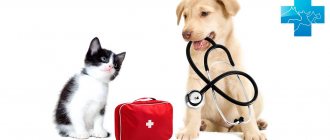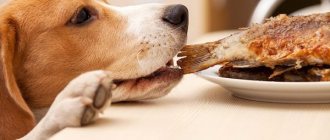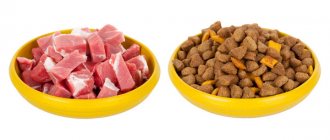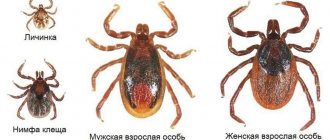Poisoning in dogs has been quite common in recent years. Basically, if a dog is poisoned, the owner of the dog is usually to blame.
Most often a dog can get poisoned when:
- During a walk, he has the opportunity to pick up low-quality food waste.
- Feeding poor quality, spoiled, sour food products.
- Failure to comply with food storage rules and regulations.
- Free access for the dog to household chemicals, fertilizers, and medicines.
- Including a large amount of meat products in your dog's diet.
How dangerous is poisoning for a dog?
When toxic substances enter the body, intoxication occurs. The digestive system is most often affected, but the respiratory, cardiac and excretory systems are also affected.
In the most severe cases, the dog may die from:
- Cardiac arrest;
- Pulmonary edema;
- Dehydration of the body.
Poison for rodents
It is this that causes the death of domestic animals in the vast majority of cases. On the one hand, this is the carelessness of the owners themselves. When using mice and rat control products, they leave them in areas within reach of the dog. If poisoned grain is not of interest, then sausage or minced meat is the opposite. In addition, ill-wishers use such bait. What to do if your dog is poisoned with rat poison? Run to the vet immediately. For the most part, these toxic substances lead to impaired blood clotting and damage to small and large capillaries. That is, the dog will die painfully from internal bleeding, slowly and inevitably.
Symptoms of poisoning in a dog
With any poisoning, the dog begins to behave either sleepy and lethargic, or, on the contrary, shows excessive activity and does not pay attention to the words of the owner. Already when these first signs appear, it is necessary to take action to help your pet.
In case of serious poisoning, poisons affect the nervous system. Poor coordination, paralysis, muscle cramps, aggression are clear symptoms of severe intoxication..
Food poisoning in dogs is one of the most common ailments in veterinary practice. When you eat foods that are not intended for animals, toxins enter their bodies. In case of non-food poisoning, they enter through the skin and lungs.
Main reasons
Poisoning can be divided into 2 categories: food and non-food.
Food poisoning is caused by dangerous toxins entering the stomach. Poisoning in a puppy and an adult dog in this case occurs due to the use of:
- spoiled or poisoned products;
- household chemicals;
- cosmetics (shampoo, perfume, varnish, hair dye);
- poisonous plants, mushrooms;
- medicines;
- preparations for exterminating rodents, insects, etc.
Sometimes it is enough for an animal to lick a poisoned surface once (it can even be its own fur if poison has gotten on it) or take a deep breath of contaminated air for intoxication to occur.
Non-food poisoning is considered to be poisoning caused by external factors. Toxins enter the body through the respiratory tract and skin. Worth fearing:
- gasoline vapors;
- carbon monoxide;
- bites of poisonous reptiles and insects;
- pesticides.
Food poisoning in a dog
Accompanied by frequent vomiting with stomach contents (food, mucus, gastric juice). Also diarrhea, bloating and pain in the abdominal cavity. The dog's mucous membranes become clearly bluish in color.
Poisoning with toothpaste, raisins, grapes, and salt is common. The critical dose of salt per day is 3g/kg. Dehydration, problems in the nervous system, and asphyxia appear.
Unhealthy food:
- Nuts;
- Avocado;
- Broccoli;
- Tomatoes;
- Garlic;
- Onion;
- Peeling potatoes.
Also, the animal’s diet should not contain a large amount of meat, due to which protein intoxication is possible. Cat food is also dangerous - it contains large amounts of taurine.
Prevention measures
We offer simple precautions that every dog owner should follow:
- Remove medicines, household chemicals, cosmetics, pest control and rodent control products to a height where animals cannot reach.
- Do not feed your pet low-grade, cheap food or spoiled leftover food.
- Train your dog to rummage in the ground, trash can, or pick up anything on the street.
- Always keep an eye on your pet, especially when you go for a walk or find yourself in an unfamiliar place.
- At home, be sure to keep all the necessary first aid medications in your first aid kit.
- When relaxing in nature, do not allow your animal to run around pesticide-treated garden plots and poisonous plants.
Following the rules will help avoid poisoning and its serious consequences.
Protein poisoning
As a result of feeding a dog only meat, sooner or later a large amount of protein accumulates in the body, which leads to intoxication.
Unlike cats, dogs cannot eat only meat. They are not absolute predators, but rather omnivorous animals.
It is quite simple to understand that your pet has this particular type of poisoning:
- Hair falls out on the face and back;
- Sudden weight loss occurs;
- The urine darkens and a pungent odor appears.
These signs of dog poisoning can be noticed within a month after actively feeding meat.
If time is lost
This is a sore point, but even in this case the owner must know what to do. The dog was poisoned, which means you only have a couple of hours to empty your stomach of the deadly contents. After this, it passes into the intestines, and there is no point in tormenting the animal with useless vomiting. This should not be done if there are convulsions or obvious nerve damage. Do not attempt to feed the animal.
No matter how much you would like to help, do not start treatment on your own. Only a specialist should think about what to do if a dog is poisoned based on the clinical picture. Doctors rarely wait for test results from the laboratory. They measure temperature, blood pressure and pulse, and then ask the owner about what happened. Based on this, an assumption is made about the nature of the poison and treatment begins. Laboratory tests can correct the initial diagnosis and therapy. To do this, the animal's blood is tested for the presence of poison.
Dog poisoning from chocolate
You should not give your animal chocolate, as it contains a dangerous element - theobromine. A large concentration of this substance is found in bitter chocolate, while milk chocolate is less dangerous.
At a dose of 40 mg/kg, the first symptoms of poisoning in the dog begin to appear.
100g of dark chocolate contains approximately 455mg-1.5g of theobromine. Accordingly, for a dog weighing up to 20 kg, a chocolate bar is a lethal dose.
Manifestations of theobromine poisoning:
- Diarrhea;
- Vomit;
- Incessant thirst;
- Frequent urination;
- Cardiopalmus;
- Spasms;
- Heart attack.
Activities of dog hunters
In their cruel business, they often use drugs that are easy to obtain. Very often this is Isoniazid, a drug used to treat tuberculosis. It is not toxic to humans, which cannot be said about our smaller brothers. In dogs, the drug disables certain areas of the brain. Death occurs after 40 minutes, at most after 5 hours. The cause of death is oxygen starvation. Moreover, the animal experiences severe pain due to paralysis of the respiratory muscles.
The antidote is vitamin B6. That is why it is recommended to keep it in your first aid kit at all times. A simple and affordable remedy will help if the dog has been poisoned with tuberculosis tablets. What to do? You need to inject 10 ml of vitamin intramuscularly, and after 2 hours repeat the procedure.
Dog poisoning from poisonous plants
Dogs love to taste everything, and plants keep them curious. A serious condition of a dog can be caused by a houseplant such as the Sago Palm. Several palm seeds contribute to kidney problems and cause severe cramps.
Symptoms of plant poison:
- Convulsions;
- Difficulty urinating;
- The stool is black.
Prerequisites
Most dogs have the habit of picking up various pieces from the ground that seem attractive to them. Therefore, it is very important to work with animals and train them from early childhood. One of the key skills is the ability to refuse food given by a stranger, as well as the learned prohibition of picking up something from the ground. This will make your life much easier, although it does not guarantee complete safety. Today dog hunters even practice treating trees and grass with special compounds. By sniffing and licking them, your pet will also receive a dose of poison. That's why it's so important to know what to do if your dog is poisoned.
First aid for poisoning in a dog
Despite the fact that each type of poisoning is treated in different ways, first aid to a dog in case of poisoning follows the same plan:
- Don’t panic yourself, calm the dog down.
- Eliminate the influence of the toxin in accordance with the method of its appearance in the body (gastric lavage, cleansing the site of an insect bite, cleansing hair and skin, access to air).
- Removing a substance from the body (enema, rinsing the mouth).
Attention! Gastric lavage can only be done if you know which substance is causing the poisoning. Otherwise, it can only harm the pet.
- Contact your veterinarian. Further actions are carried out by a specialist.
- Administration of an antidote (injection, activated carbon, phosphalugel, enterosgel).
- Administration of a diuretic.
- Relieving cramps, restoring breathing.
- Issue a prescription for further treatment.
- Development of measures to support organs affected by poison.
ALSO URGENTLY carry out measures to remove the toxic substance from the gastrointestinal tract:
1. Induce vomiting (for example, by forcefully drinking a large amount of boiled water (NOT saline solution, you can poison the animal with the salt itself). With caution, you can use hydrogen peroxide with water - 1:1 (at the rate of 1 tbsp. l of the product per 3 kg of animal weight );
2. After vomiting or if it was not possible to induce vomiting - adsorbents (activated carbon 1-3 g/kg, enterosgel (dilute with water to a jelly state, pour into the mouth with a syringe);
3. Corvalol (15 drops per 20 kg);
4. Cleansing enema + laxative salts;
5. Give as much fluid as possible + diuretics (diuretic, for example furosemide), antispasmodics are possible (no-spa injected intramuscularly);
6. TO THE VETERINARIAN.
Treatment of poisoning in dogs at home
Provided that it is not possible to get to the veterinary clinic in the near future, you should act according to the above plan yourself. In case of poisoning, you cannot hesitate - the sooner measures to remove toxic substances begin, the higher the chance of saving the dog.
The first thing to do if a dog is poisoned is to wash the organs damaged by the poison (washing, washing off the fur and skin, etc.). To provoke vomiting, you can use a diluted 1:1 solution of peroxide with water. It pours in one sharp movement into the clean mouth.
Salt, soda and mustard solutions can only harm the dog. Peroxide is the best option.
You should not induce vomiting if:
- The animal has been poisoned by alkali, oil or acid;
- Swallowed a foreign object;
- The dog is weakened (vomit enters the respiratory tract);
- Brachiocephalic dog (higher risk of complications - pneumonia).
To cleanse the intestines, a water enema is given. The bite site is covered with ice, which allows the blood vessels to narrow faster and prevent the spread of poison.
Briefly about the main thing
- Poisoning can be food poisoning - if the substance entered through the digestive tract, and non-food poisoning - as a result of a snake bite, ingestion of the toxin through the skin, or as a result of inhalation of toxic fumes.
- Poisoning can lead to the death of a pet if help is not provided in time.
- At home, you can induce vomiting, give sorbents and give your dog water, but it is best to take the animal to a veterinary clinic as soon as possible.
- Dogs should not be given medications from a human first aid kit!
- There can also be dangers at home, for example, some house plants can be poisonous to dogs, so be careful.
Have we answered your question fully enough? If not, post your question in the comments below and our veterinarian will answer it.
Did you like the article? Share it with your friends on social media. networks. This will help them get useful information and support our project.
Medicine for dogs in case of poisoning
In case of food-type intoxication, human medicine (activated carbon, atoxil, gel) will also help.
Only a veterinarian can prescribe medications and subsequent procedures in case of poisoning, however, for independent first aid, you can refer to the list:
- An injection of Vitamin K (1-2ml) helps against rat poison;
- For isoniazid poisoning – Pyridoxine 1% (10ml/30kg);
- From the effects of arsenic – Ferrous sulfate + Magnesium oxide (drink);
- An adsorbent (drink) will save you from acid;
- An antidote (drink) is used for insect venom.
First signs
The worst thing is if the owner is not nearby at the right time. For example, you quickly took your pet out onto the playground and didn’t notice how he grabbed the “gift” left on purpose or accidentally, after which you calmly went to work. The pet is unlikely to survive until evening. A case was described when utility workers worked to place rat poison in basements. Finishing work in the evening at the last entrance, we forgot the bag of poison on the bench and left. At night, the wind carried him into the grass, where he was found the next day by a dog. A tragedy that could have been avoided.
The first signs appear quite quickly; it will take from 1 to 3 hours - and the clinical picture will already be obvious. Depending on which active substance is the cause, symptoms may vary. You should be wary of:
- Serious lack of coordination.
- Profuse salivation, foam at the mouth.
- Convulsions and seizures.
- Blue tongue.
- General anxiety, the dog whines, howls and rushes about.
If you observe one or more symptoms, you need to act immediately. Delay will lead to a quick and painful death of the animal. Below we will look at what to do if your dog is poisoned.
Dangerous medications for dogs
Not every drug is suitable for treating an animal. Dogs should absolutely not take non-steroidal anti-inflammatory drugs, for example:
- Ketorol;
- Aspirin;
- Ibuprofen;
- Voltaren;
- And others.
Only sometimes, after a full examination, a veterinarian can add the following drugs to the treatment list:
- Dexafort;
- Exekan;
- Prednisolone.
Close to you
Situations where people who love and hate animals live nearby are, unfortunately, not uncommon. What should you do if your neighbors threaten to poison your dog? Complaining to law enforcement agencies is practically useless. They won't make any effort. The exception is if you can prove that this is a purebred animal that is very expensive. Then this can be regarded as a threat of harm to valuable property. But don’t forget that you also need to prove that these threats existed. Therefore, record it on a tape recorder and invite witnesses.
Of course, it is best to resolve the matter peacefully. Try to minimize your pet’s contact with your neighbor, and establish contact with him yourself. Go visit him with candy, find out how he lives, what he likes. Gradually, he will become more disposed towards you and lenient towards your pet. Do not forget about training; the animal should not take anything from the ground or from other people.
Dietary food for dogs after poisoning
Having eliminated all symptoms of intoxication, you should strictly follow the veterinarian’s instructions. During the first few days, it is necessary to introduce fasting for your pet, which will not be difficult - the dog itself will refuse food, calming down after the stress it has experienced.
Over the next ten days, nutrition in the form of light broths is gradually introduced. Low-fat kefir and buckwheat are also suitable. If the dog recovers quickly, it will soon have a good appetite, then you can boil light meat, oatmeal, and steam vegetables.
If before poisoning the animal was eating dry food, it is worth introducing it back into the diet, starting with a medicinal line of food.
Recovery period
For a comfortable recovery, the pet will have to limit its usual exercise and change its diet. The listed recommendations must be followed until complete recovery.
Care and walks
Drinking plenty of fluids and taking diuretics will temporarily cause you to urinate more frequently. Buy absorbent diapers and try to walk your dog more often than usual. While walking, avoid running, jumping and other activities.
Diet
In the first 1-2 days, the weakened body will not be able to digest the usual food, so it is better to put the animal on a starvation diet. After the condition improves and interest in food appears, offer your pet light and liquid dishes: meat broths, oatmeal and rice porridge, low-fat cottage cheese, kefir and boiled vegetables.
Feeding should be frequent and portions small. Don't forget to add vitamins prescribed by your doctor to your food.
When dry feeding, you need to choose a new food. A special line designed for animals with gastrointestinal diseases is suitable as a dietary food. It is better to choose wet food - at least for the first time.
Pay special attention to water. The bowl should not be empty, and the liquid poured into it should be clean and fresh.











